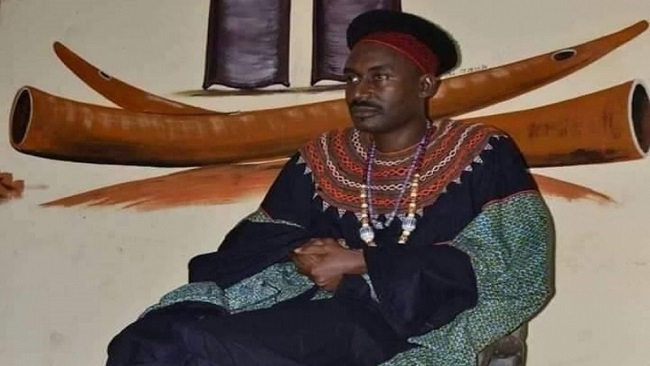How COVID-19 has Impacted Africa’s Wealthiest Countries by GDP
Spanning 54 countries, Africa is a powerhouse in the world of natural resources and innovation. And despite the social and political issues the continent faces, there’s was no doubt that it was on track to see an abundance of opportunities to grow in the coming years – however, there was no telling what impact COVID-19 […]

Spanning 54 countries, Africa is a powerhouse in the world of natural resources and innovation. And despite the social and political issues the continent faces, there’s was no doubt that it was on track to see an abundance of opportunities to grow in the coming years – however, there was no telling what impact COVID-19 and subsequent national lockdowns would have on local GDPs. Here is a quick look at the richest countries in Africa in a COVID-19 economy: Nigeria A key component of the African economy, Nigeria has a population amounting to half of West Africa (just over 202 million).
With an abundance of natural resources, it remains Africa’s number one producer in terms of GDP output, roughly $446,543 Billion at the end of 2019. The country is Africa’s largest crude oil exporter, recording production about 1,6 million barrels a day in December of 2019. Petroleum exports account for 10% of GDP and exceed 80% of export revenue. However, with the 2020 crude oil price war between Saudi Arabia, Russia and the US, and the impacts of COVID-19, Nigeria saw the price of oil drop by more than 50%. Growth has since slowed due to production shocks, political instability in the region and a growing young and unemployed population – and the World Bank expects the Nigerian economy to shrink by 3.2% in 2020, equaling a loss of $20 billion to GDP. 2.
South Africa South Africa holds on to the second spot, after a difficult 2nd half of 2019. South Africa went into a recession after 2 consecutive quarters of negative GDP growth – resulting in a GDP of $358,839 Billion in 2019.
The main reason, among others, power outages from ageing operations at its main power producer, Eskom. Halfway into 2020 and the country’s GDP has slumped by 51% “as the result of one of the hardest COVID-19-related government lockdowns anywhere in the world“. With the entire global economy experiencing a slowdown, and its main iron ore trade partner, China, having to close factories and slow construction, South Africa could face a difficult road ahead. COVID-19 will have a profound part to play in South African growth, not only suppressing industries such as tourism and travel but also mining and personal services. 3. Egypt Real GDP growth reached 5,6% in 2019, up from 5,3% in 2018 – roughly totalling $302,256 Billion. Unemployment has also fallen to 7.5% in the 4th quarter, from 9.9% a year before. By sector, gas extractives, tourism, wholesale and retail trade, real estate and construction have been the main drivers of growth. With more than 50% of GDP being derived from service-based employment, Egypt has done well to diversify itself from raw material exports.
In a surprising turn, Egyptian Prime Minister Mostafa Madbouly says that “the country achieved a primary surplus of 1.8 per cent of gross domestic product (GDP) in 2019-2020, compared to a target of 2 per cent before the outbreak of COVID-19″. This could be attributed to an economic reform program backed by The Government of Egypt and the IMF in order to bolster economic growth. 4. Algeria Algeria is a country highly exposed to the performance of hydrocarbons, including oil and natural gas. In fact, hydrocarbons make up nearly 70% of total GDP. However, in mid-2019, many high ranking executives in the hydrocarbon industry were detained on investigations of corruption. This political uncertainty has slowed down hydrocarbon growth, with growth in the sector contracting by 7%. By sector, commercial services, industrial, construction and public works, and agriculture sectors continue to drive non-hydrocarbon growth, reaching 5.6%, 4.6%, 3% and 2.7% in Q1-2019, respectively. However, in an economy so highly correlated to oil and natural gas prices, the current war in oil production has had detrimental impacts on its economy.
The country’s GDP is expected to contract by 3%. 5. Morocco ($119,04 Billion) Moroccan real GDP growth slowed to 2.7% in 2019, missing the World Banks’ estimate of 2.9%. Morocco derives just under 15% of its GDP from agriculture, 30% from industry and the remainder from services. Domestic demand remains strong with average salary increases outpacing the low inflation of 0.6%. Before the mention of COVID-19, the World Bank estimated an average growth rate of 3.3% for 2020/21 due to increased investment in the Moroccan automotive industry. One such investment was made in their Peugeot plant which hopes to double production capacity.
However, the World Bank now says that the economy is expected to be “doubly impacted by domestic and external economic shocks. Real GDP is projected to contract by 4 per cent in 2020, a sharp contrast to the 3.6 per cent expansion projected for that year prior to the outbreak.” Edited by Jenna Delport Follow Jenna Delport on Twitter Follow IT News Africa on Twitter
















